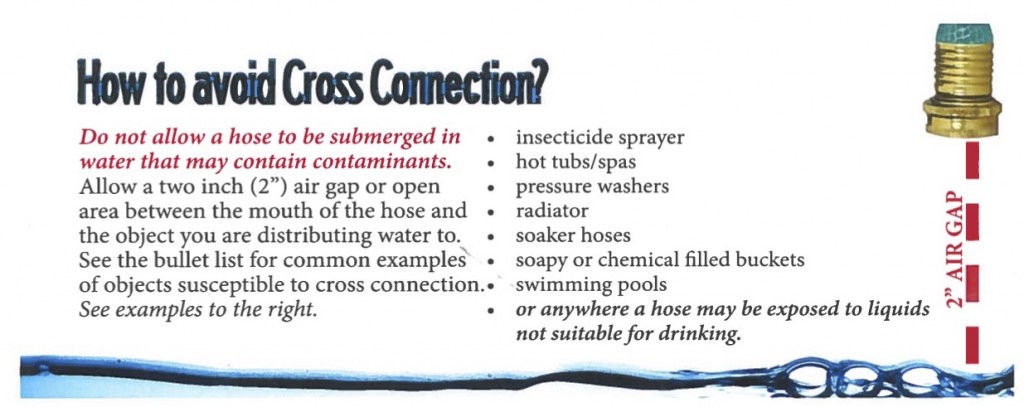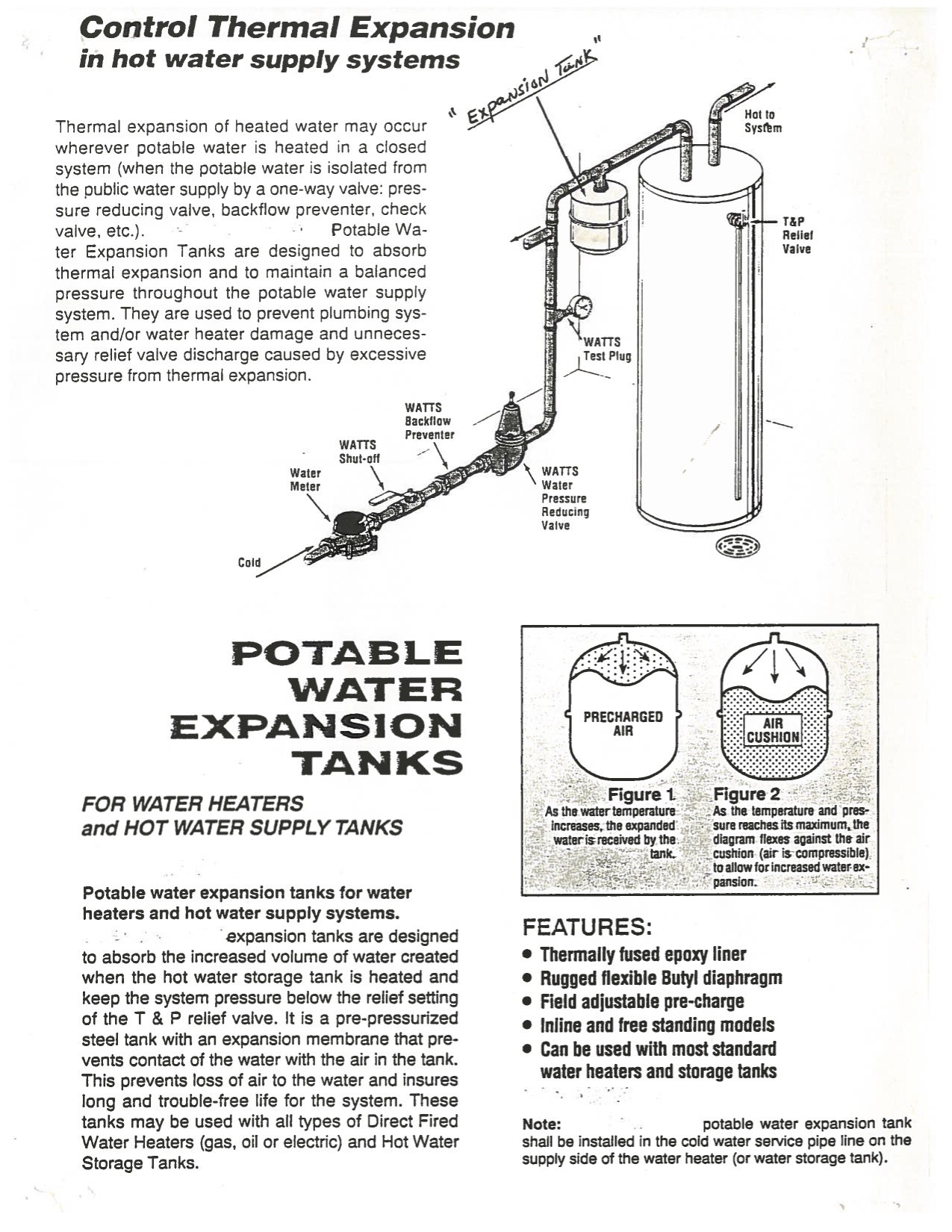Protecting Your Home Against Cross Connections
Without proper protection devices, something as useful as your garden hose has the potential to poison your home’s water supply. In fact, over half of the nation’s cross-connections involve unprotected garden hoses.

What is a “cross-connection”?
A cross-connection is a permanent or temporary piping arrangement which can allow your drinking water to be contaminated if a backflow condition occurs.
What is “backflow”?
It’s just what it sounds like: the water is flowing in the opposite direction from its normal flow. With the direction of flow reversed, due to a chance in pressures, backflow can allow contaminants to enter our drinking water system through cross-connections.
A potentially hazardous cross-connection occurs every time someone uses a garden hose sprayer to apply insecticides or herbicides to their lawn. Another cross-connection occurs when someone uses their garden hose to clear a stoppage in their sewer line.
Without a proper backflow prevention device between your hose and hose bibb (spigot or outside faucet), the contents of the hose and anything it is connected to can backflow into the piping system and contaminate your drinking water.
This hazardous situation sometimes can affect more than a single home. In 1977, an entire town in North Dakota had to be rationed water from National Guard water trucks while the town’s water distribution system was flushed and disinfected following contamination by DDT. Investigation determined that two residents spraying DDT had made direct cross-connections to their homes. A backflow condition had occurred, sucking the DDT through the home piping systems and out into the town’s water distribution system.
Backflows due to cross-contamination are serious plumbing problems. They can cause sickness and even death. However, they can be avoided by the use of proper protection devices. Each spigot at your home should have a hose-bibb vacuum breaker installed. This is a simple, inexpensive device which can be purchased at any plumbing or hardware store. Installation is as easy as attaching your garden hose to a spigot.
Leak Prevention

Check Your Water System For Leaks
Here’s a simple procedure that can tell if you have a leak and how much water you’re losing:
- Locate Water Meter – Normally at property line in front yard.
- Read Meter Twice – First at night, after day’s water use has ended; again in the morning, before any water is used.
- Find The Difference – Subtract the first from the second reading, to tell you how much water (if any) leaked out overnight.
- If You Suspect A Leak – Find it by checking pipes, connections, etc. Have it repaired quickly.
Check shut-off valves regularly and repair or replace as needed. They make repairs easier and save water in emergencies. Also don’t forget to check leaking/overflowing commodes.
Thermal Expansion

